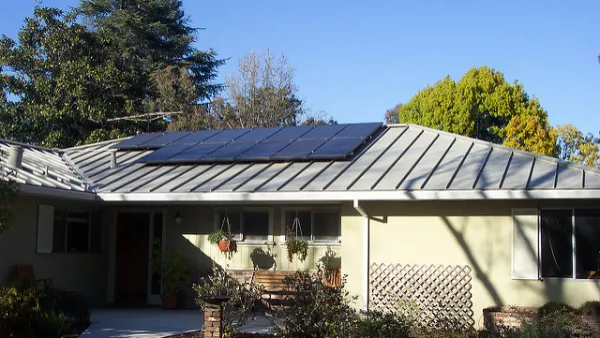Cities throughout California, including Santa Monica, have been awarded research and development funding through the California Energy Commission to plan community-scale microgrid solutions.
In late 2015, the California Energy Commission released their grant funding opportunity related to building “Advanced Energy Communities” that would deploy community-scale renewable energy solutions and usher in the age of microgrids. The funding opportunity totaled $48 million, looking at assisting jurisdictions transform their energy systems with energy efficiency, renewable energy, and storage. The City of Santa Monica was one of 12 jurisdictions to be awarded a $1.5 million grant to plan and design a microgrid in Santa Monica at their City Yards location. In an exclusive interview with The Planning Report, the project leads of the City Yards Microgrid project share the vision for Santa Monica’s decarbonized, resilient energy future.
Santa Monica’s City Yards project is located in an industrial/arts district, on a landfill, adjacent to a mobile home community. The project location also includes the City of Santa Monica's facilities maintenance and resource recovery center, making it a site with significant industrial activity. Sustainability analyst Garrett Wong described how the City is using the bones of the site to “prepare to redesign and redevelop it as a facility of the future—a critical, community-facing facility…providing: renewable energy resources, local energy storage, resilience, EV charging, and good stewardship in terms of energy demand.”
As with a lot of California's energy research and development dollars, the goal of the project is understanding barriers to scalability and showing other jurisdictions what is possible in building the "2.0 electrical grid." City of Santa Monica Deputy Sustainability Officer Shannon Parry explained the importance of having Santa Monica, a smaller city with older infrastructure, as a champion of forward-looking energy systems. Parry looks at Santa Monica as a fortunate city that gets to “figure out how we can demonstrate that microgrids can be done, how they can be situated, executed, financed, and how they can work. We want this microgrid project to demonstrate that this type of innovation is feasible, and that the time to deploy distributed technologies in urban environments is now.”
The first stage of the grant is to overcome planning and permitting barriers to integrating a microgrid into existing infrastructure. These lessons, and the lessons learned by other CEC funded “advanced energy community” projects throughout the state, will be beneficial for other cities as they move forward with financing their own energy infrastructure upgrades. Santa Monica, along with the other 11 awardees of the "Advanced Energy Communities" funding opportunity, will be the guinea pigs for finding out the barriers to microgrid and clean energy technology adoption; and then address those issues so local governments can integrate clean energy solutions.
Read more about Santa Monica’s City Yards microgrid project in The Planning Report.
FULL STORY: Grid 2.0: Santa Monica Funded to Plan a Neighborhood-Scale Microgrid

Analysis: Cybertruck Fatality Rate Far Exceeds That of Ford Pinto
The Tesla Cybertruck was recalled seven times last year.

National Parks Layoffs Will Cause Communities to Lose Billions
Thousands of essential park workers were laid off this week, just before the busy spring break season.

Retro-silient?: America’s First “Eco-burb,” The Woodlands Turns 50
A master-planned community north of Houston offers lessons on green infrastructure and resilient design, but falls short of its founder’s lofty affordability and walkability goals.

Test News Post 1
This is a summary

Analysis: Cybertruck Fatality Rate Far Exceeds That of Ford Pinto
The Tesla Cybertruck was recalled seven times last year.

Test News Headline 46
Test for the image on the front page.
Urban Design for Planners 1: Software Tools
This six-course series explores essential urban design concepts using open source software and equips planners with the tools they need to participate fully in the urban design process.
Planning for Universal Design
Learn the tools for implementing Universal Design in planning regulations.
EMC Planning Group, Inc.
Planetizen
Planetizen
Mpact (formerly Rail~Volution)
Great Falls Development Authority, Inc.
HUDs Office of Policy Development and Research
NYU Wagner Graduate School of Public Service




























